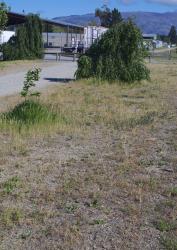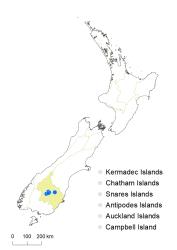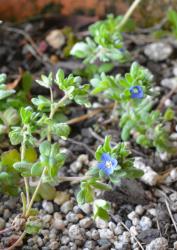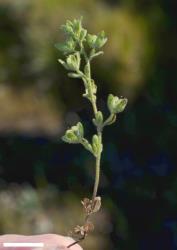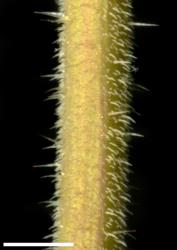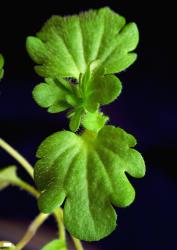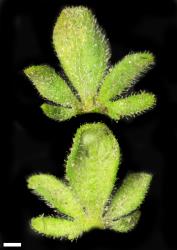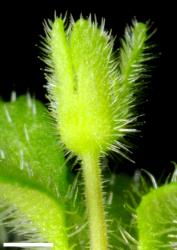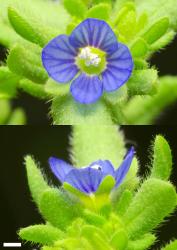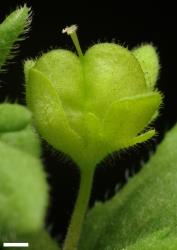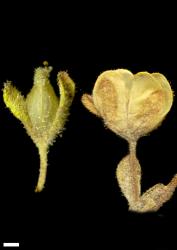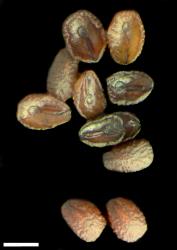Annual herb to 0.2 m tall. Stems ascending, erect above, eglandular-puberulent throughout with longer, spreading, dark-tipped glandular hairs becoming dense above; hairs uniform. Leaf bud indistinct; leaves diverging while still small, opposite-decussate, erecto-patent to spreading, thin, elliptic to ovate to deltoid, 3–10 mm long, 3–12 mm wide, dull pale green to green above and beneath; mid-vein and 2–4 palmate lateral veins evident at least beneath; surfaces hairy with long eglandular and glandular hairs on both sides and margins; margins serrate crenate to deeply crenate on lower leaves; upper becoming deeply digitate, and often with a few teeth on lobes; teeth and lobes in 2–4 pairs; apex obtuse or rounded; base abruptly cuneate or truncate; petiole 0.5–1.5 mm long. Inflorescence a terminal raceme, 70–100 mm long; flowers distant, 5–20, all bisexual; bracts alternate, 3–5-fid to base with obovate to spathulate lobes, uppermost sometimes simple, < or about = pedicels; pedicels erecto-patent, 5–10 mm long, eglandular- and glandular-hairy all around. Calyx lobes 4, obtuse to rounded, entire or sometimes toothed, 3.5–4.5 mm long, unequal, glandular-hairy with a few eglandular hairs. Corolla 4–6 (rarely to 8) mm diameter; tube white and yellow, 0.5–1.0 mm long, < calyx, shortly eglandular-hairy inside; lobes 4, blue, erecto-patent to spreading, sub-equal, ovate to rhomboid, 3.5–4.5 mm long, obtuse; nectar guides dark blue. Stamen filaments white to blue, 1.5–2 mm long; anthers dark blue. Style glabrous, 0.8–1.5 mm long. Capsules angustiseptate, emarginate to obcordate, glandular-ciliate near margins and usually also on faces, 3–5 mm long, 4–6 mm at widest point. Seeds ellipsoid to ovoid, concave on funicle face, convex on back, bluntly wrinkled, dark brown, 1.3–1.8 mm long.
Veronica triphyllos plants can be easily identified because they have deeply divided upper leaves and lower bracts, and deeply cup-shaped, dark-coloured seeds that are wrinkled on their outer faces.
Plants of V. verna, which grow in similar habitats, also have divided upper leaves and lower bracts, but their flowers and capsules are much smaller and their seeds are disc-like, pale, and smooth.
South Island: Otago (Alexandra, Clyde, and Puketoi).
Depleted grassland, waste land, railway yards, sale yards. Recorded elevations range from 150 to 400 m.
Indigenous to Europe, south-west Asia, western North Africa.
Healy (1946, p. 402). Voucher: CHR 48478, G. Simpson, Alexandra.
Flowers: August–October; fruits: October–November.
2n = 14, from overseas material (Albach et al. 2008).
Veronica triphyllos is classified in V. subg. Pellidosperma (Albach et al. 2004; Albach & Meudt 2010).



